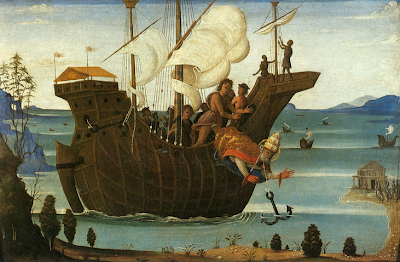We should remember that we do not control life; rather, God does. No matter what our best-laid plans might be, they will be defeated unless they are in harmony with God’s plan for us. If God cares for the birds of the air and the flowers of the field, we can certainly know that He cares for us. The birds are fed, the flowers are clothed, because all these things fulfill their nature – the purpose for which they were created.
So then, if man fulfills his nature – not in idleness, but in trustful work; not in selfishly gathering things to himself, but in caring for those around him – God certainly will not fail in providing what we truly need to fulfill the purpose He has given us.
We are created in God’s image, and our lives are to reflect the mystical life of the Holy Trinity. As God created all things, it is part of our proper nature to cooperate with God through our daily work. As God cares for us, so it is part of our proper nature to care for others, sharing in what God has given us.
So on this Thanksgiving Day let us be patient and forgiving, being thankful for what we have been given by God in this life. And because what we have can never become an end in itself, be generous in sharing with others. With all we have to be thankful for, we should give thanks most of all for the love of our Heavenly Father, Who has provided for our needs, and Who has opened the way for our eternal salvation through His Son Jesus Christ our Lord.
May God give us all a happy, joyful, and holy Thanksgiving Day.
O ALMIGHTY and everlasting God, who crownest the year with thy goodness, and hast given unto us the fruits of the earth in their season: give us grateful hearts, that we may unfeignedly thank thee for all thy loving-kindness, and worthily magnify thy holy Name; through Jesus Christ thy Son our Lord, who liveth and reigneth with thee, in the unity of the Holy Spirit, ever one God, world without end. Amen.
_____________________________
Pictured: "The Angelus"
by Jean-Francois Millet (1814-1875)


















